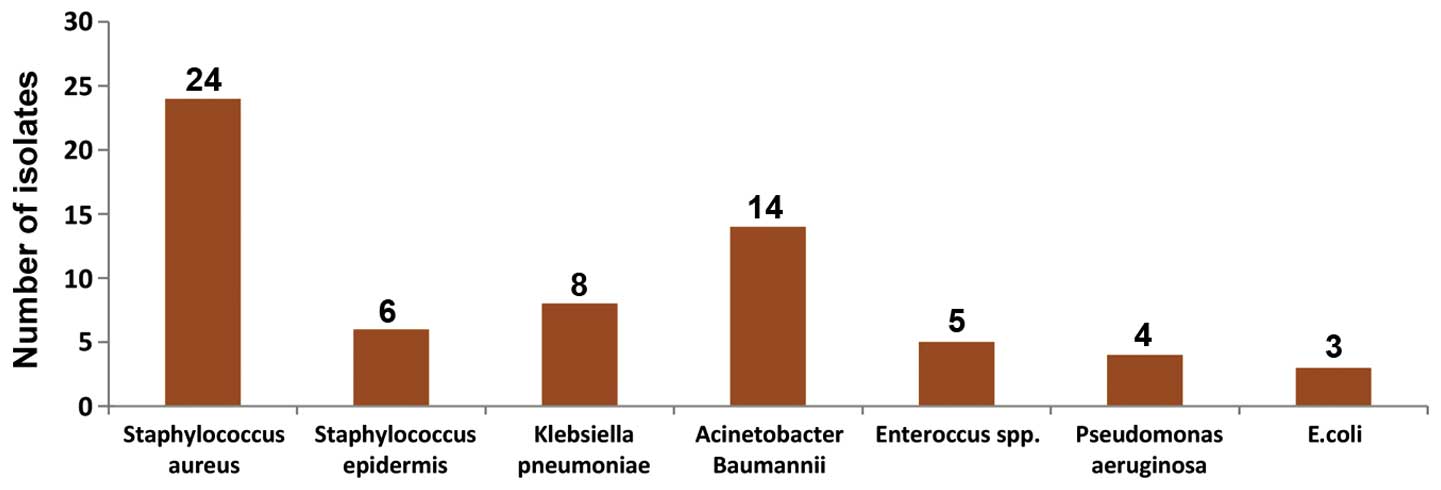|
1
|
Paolucci M, Landini MP and Sambri V: How
can the microbiologist help in diagnosing neonatal sepsis? Int J
Pediatr. 2012.1201392012.PubMed/NCBI
|
|
2
|
NNPD Network, . National
Neonatal-Perinatal Database - Report 2002–2003. National
Neonatology Forum NNPD Network; New Delhi, India:
|
|
3
|
UNICEF, WHO, The World Bank, and The
United Nations, . Levels and Trends in Child Mortality - Report
2011. UNICEF; New York, NY: 2011
|
|
4
|
Qazi SA and Stoll BJ: Neonatal sepsis: a
major global public health challenge. Pediatr Infect Dis J.
28:(Suppl 1). S1–S2. 2009. View Article : Google Scholar : PubMed/NCBI
|
|
5
|
Thaver D and Zaidi AK: Burden of neonatal
infections in developing countries: A review of evidence from
community-based studies. Pediatr Infect Dis J. 28:(Suppl 1). S3–S9.
2009. View Article : Google Scholar : PubMed/NCBI
|
|
6
|
Al-Taiar A, Hammoud MS, Cuiqing L, Lee JK,
Lui KM, Nakwan N and Isaacs D: Neonatal infections in China,
Malaysia, Hong Kong and Thailand. Arch Dis Child Fetal Neonatal Ed.
98:F249–F255. 2013. View Article : Google Scholar : PubMed/NCBI
|
|
7
|
Clark RH, Bloom BT, Spitzer AR and
Gerstmann DR: Empiric use of ampicillin and cefotaxime, compared
with ampicillin and gentamicin, for neonates at risk for sepsis is
associated with an increased risk of neonatal death. Pediatrics.
117:67–74. 2006. View Article : Google Scholar : PubMed/NCBI
|
|
8
|
Stoll BJ, Hansen N, Fanaroff AA, Wright
LL, Carlo WA, Ehrenkranz RA, Lemons JA, Donovan EF, Stark AR, Tyson
JE, et al: Changes in pathogens causing early-onset sepsis in
very-low-birth-weight infants. N Engl J Med. 347:240–247. 2002.
View Article : Google Scholar : PubMed/NCBI
|
|
9
|
Ferreira RC, Mello RR and Silva KS:
Neonatal sepsis as a risk factor for neurodevelopmental changes in
preterm infants with very low birth weight. J Pediatr (Rio J).
90:293–299. 2014. View Article : Google Scholar : PubMed/NCBI
|
|
10
|
Dammann O, Kuban KCK and Leviton A:
Perinatal infection, fetal inflammatory response, white matter
damage, and cognitive limitations in children born preterm. Ment
Retard Dev Disabil Res Rev. 8:46–50. 2002. View Article : Google Scholar : PubMed/NCBI
|
|
11
|
Jumah DS and Hassan ML: Predictor of
mortality outcome in neonatal sepsis. Medical Journal of Basrah
University. 25:11–18. 2007.
|
|
12
|
Shrestha S, Adhikari N, Rai BK and
Shreepaili A: Antibiotic resistance pattern of bacterial isolates
in neonatal care unit. JNMA J Nepal Med Assoc. 50:277–281.
2010.PubMed/NCBI
|
|
13
|
Ghotaslou R, Ghorashi Z and Nahaei MR:
Klebsiella pneumoniae in neonatal sepsis: A 3-year-study in the
pediatric hospital of Tabriz, Iran. Jpn J Infect Dis. 60:126–128.
2007.PubMed/NCBI
|
|
14
|
Klein JO and Remington JS: Current
concepts of infection of the fetus and newborn infantInfectious
diseases of the fetus and newborn. WB Saunders; Philadelphia, PA:
pp. 1–24. 2000
|
|
15
|
Collee JG, Fraser AG, Marmion BP and
Simmons A: Bacteria and Related OrganismsMackie and McCartney
Practical Medical Microbiology. Elsevier India; Gurgaon, India: pp.
151–423. 2008
|
|
16
|
Puopolo KM: Bacterial and fungal
infectionsManual of neonatal care. Cloherty JP, Eichenwald EC and
Stark AR: 6th. Lippincott William and Wilkins; Philadelphia, PA:
pp. 274–300. 2008
|
|
17
|
Muhammad Z, Ahmed A, Hayat U, Wazir MS,
Rafiyatullah and Waqas H: Neonatal sepsis: Causative bacteria and
their resistance to antibiotics. J Ayub Med Coll Abbottabad.
22:33–36. 2010.PubMed/NCBI
|
|
18
|
Agnihotri N, Kaistha N and Gupta V:
Antimicrobial susceptibility of isolates from neonatal septicemia.
Jpn J Infect Dis. 57:273–275. 2004.PubMed/NCBI
|
|
19
|
De AS, Rathi MR and Mathur MM: Mortality
audit of neonatal sepsis secondary to acinetobacter. J Glob Infect
Dis. 5:3–7. 2013. View Article : Google Scholar : PubMed/NCBI
|
|
20
|
Sriram R: Correlation of blood culture
results with the sepsis score and the sepsis screen in the
diagnosis of neonatal septicemia. Int J Biol Med Res. 2:360–368.
2011.
|
|
21
|
Stoll BJ, Behrman RE, Kliegman RM and
Jenson HB: Infections of the neonatal infant: Pathogenesis and
epidemiologyNelson textbook of Pediatrics. 17th. Saunders and
Imprint of Elsevier; Philadelphia, PA: pp. 627–632. 2004
|
|
22
|
Saleem AF, Ahmed I, Mir F, Ali SR and
Zaidi AK: Pan-resistant Acinetobacter infection in neonates in
Karachi, Pakistan. J Infect Dev Ctries. 4:30–37. 2009.PubMed/NCBI
|
|
23
|
von Dolinger de Brito D, Oliveira EJ,
Abdallah VO, da Costa Darini AL and Filho PP: An outbreak of
Acinetobacter baumannii septicemia in a neonatal intensive care
unit of a university hospital in Brazil. Braz J Infect Dis.
9:301–309. 2005. View Article : Google Scholar : PubMed/NCBI
|
|
24
|
Caldas JPS, Marba STM, Blotta MHSL, Calil
R, Morais SS and Oliveira RTD: Accuracy of white blood cell count,
C-reactive protein, interleukin-6 and tumor necrosis factor alpha
for diagnosing late neonatal sepsis. J Pediatr (Rio J). 84:536–542.
2008. View Article : Google Scholar : PubMed/NCBI
|
|
25
|
Mayuga WAB and Isleta PFD: Clinical
correlation of neonatal and maternal hematological parameters as
predictors of neonatal sepsis. PIDSP J. 9:36–43. 2005.
|
|
26
|
Ottolini MC, Lundgren K, Mirkinson LJ,
Cason S and Ottolini MG: Utility of complete blood count and blood
culture screening to diagnose neonatal sepsis in the asymptomatic
at risk newborn. Pediatr Infect Dis J. 22:430–434. 2003. View Article : Google Scholar : PubMed/NCBI
|















